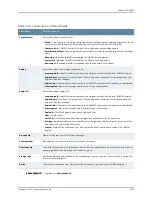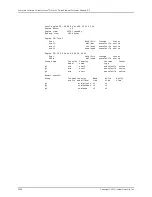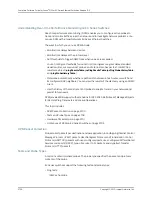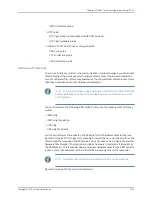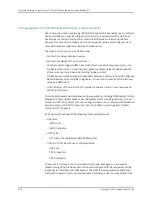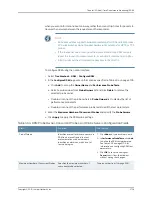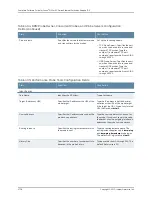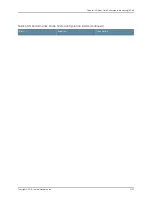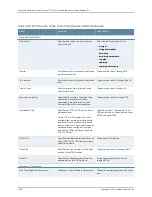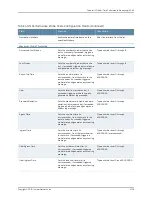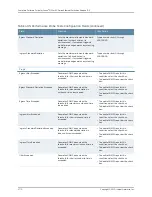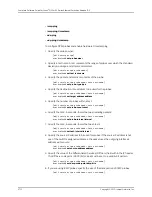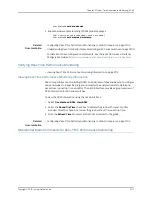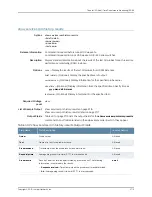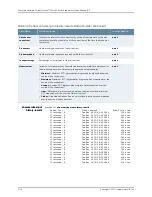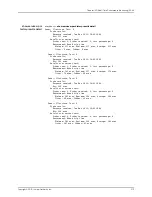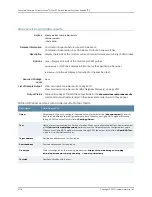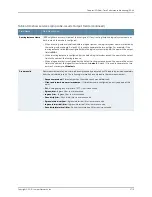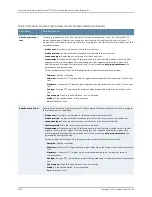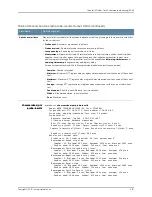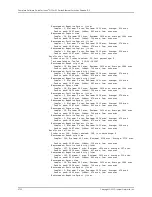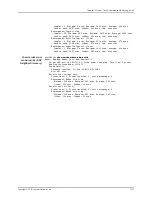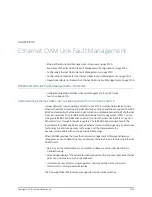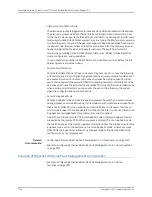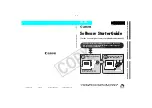
Table 495: Performance Probe Tests Configuration Fields
(continued)
Your Action
Function
Field
•
To enable SNMP traps for this
condition, select the check box.
•
To disable SNMP traps, clear the check
box.
Generates SNMP traps when the
threshold for the number of successive
lost probes is exceeded.
Probe Failure
•
To enable SNMP traps for this
condition, select the check box.
•
To disable SNMP traps, clear the check
box.
Generates SNMP traps when the
threshold for maximum round-trip time
is exceeded.
RTT Exceeded
•
To enable SNMP traps for this
condition, select the check box.
•
To disable SNMP traps, clear the check
box.
Generates SNMP traps when the
threshold for standard deviation in
round-trip times is exceeded.
Standard Deviation Exceeded
•
To enable SNMP traps for this
condition, select the check box.
•
To disable SNMP traps, clear the check
box.
Generates SNMP traps when a test is
completed.
Test Completion
•
To enable SNMP traps for this
condition, select the check box.
•
To disable SNMP traps, clear the check
box.
Generates SNMP traps when the
threshold for the total number of lost
probes is exceeded.
Test Failure
Related
Documentation
Configuring SNMP (J-Web Procedure) on page 3603
•
•
Viewing Real-Time Performance Monitoring Information on page 3713
Configuring the Interface for RPM Timestamping for Client/Server on an EX Series Switch (CLI
Procedure)
Use real-time performance monitoring (RPM) to configure active probes to track and
monitor traffic across the network and to investigate network problems. To configure
basic RPM probes on the EX Series switch, you must configure the probe owner, the test,
and the specific parameters of the RPM probe.
You can also set a timestamp to improve the measurement of latency or jitter. The probe
is timestamped by the device originating the probe (the RPM client). If you do not enable
hardware timestamps, the timer values are set. You should configure both the RPM client
(the requester) and the RPM server (the responder) to timestamp the RPM packets.
However, if the RPM server does not support hardware timestamps, RPM can only report
the round-trip measurements.
Timestamps apply only to IPv4 traffic.
You can enable hardware timestamps for the following RPM probe types:
3711
Copyright © 2010, Juniper Networks, Inc.
Chapter 130: Real-Time Performance Monitoring (RPM)
Summary of Contents for JUNOS OS 10.3 - SOFTWARE
Page 325: ...CHAPTER 17 Operational Mode Commands for System Setup 229 Copyright 2010 Juniper Networks Inc ...
Page 1323: ...CHAPTER 56 Operational Mode Commands for Interfaces 1227 Copyright 2010 Juniper Networks Inc ...
Page 2841: ...CHAPTER 86 Operational Commands for 802 1X 2745 Copyright 2010 Juniper Networks Inc ...
Page 3367: ...CHAPTER 113 Operational Mode Commands for CoS 3271 Copyright 2010 Juniper Networks Inc ...
Page 3435: ...CHAPTER 120 Operational Mode Commands for PoE 3339 Copyright 2010 Juniper Networks Inc ...
Page 3529: ...CHAPTER 126 Operational Mode Commands for MPLS 3433 Copyright 2010 Juniper Networks Inc ...

